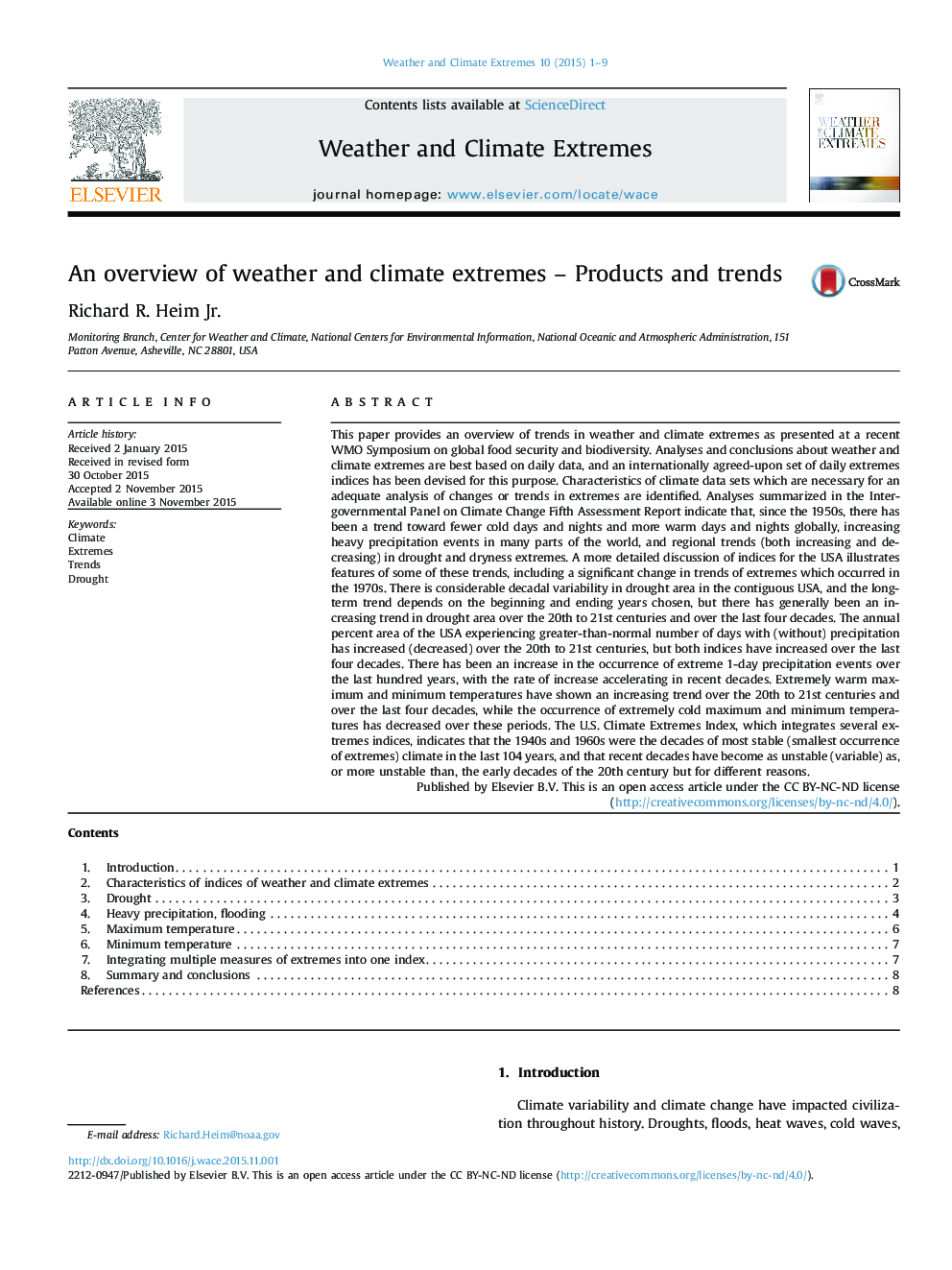| کد مقاله | کد نشریه | سال انتشار | مقاله انگلیسی | نسخه تمام متن |
|---|---|---|---|---|
| 1066644 | 1485947 | 2015 | 9 صفحه PDF | دانلود رایگان |
This paper provides an overview of trends in weather and climate extremes as presented at a recent WMO Symposium on global food security and biodiversity. Analyses and conclusions about weather and climate extremes are best based on daily data, and an internationally agreed-upon set of daily extremes indices has been devised for this purpose. Characteristics of climate data sets which are necessary for an adequate analysis of changes or trends in extremes are identified. Analyses summarized in the Intergovernmental Panel on Climate Change Fifth Assessment Report indicate that, since the 1950s, there has been a trend toward fewer cold days and nights and more warm days and nights globally, increasing heavy precipitation events in many parts of the world, and regional trends (both increasing and decreasing) in drought and dryness extremes. A more detailed discussion of indices for the USA illustrates features of some of these trends, including a significant change in trends of extremes which occurred in the 1970s. There is considerable decadal variability in drought area in the contiguous USA, and the long-term trend depends on the beginning and ending years chosen, but there has generally been an increasing trend in drought area over the 20th to 21st centuries and over the last four decades. The annual percent area of the USA experiencing greater-than-normal number of days with (without) precipitation has increased (decreased) over the 20th to 21st centuries, but both indices have increased over the last four decades. There has been an increase in the occurrence of extreme 1-day precipitation events over the last hundred years, with the rate of increase accelerating in recent decades. Extremely warm maximum and minimum temperatures have shown an increasing trend over the 20th to 21st centuries and over the last four decades, while the occurrence of extremely cold maximum and minimum temperatures has decreased over these periods. The U.S. Climate Extremes Index, which integrates several extremes indices, indicates that the 1940s and 1960s were the decades of most stable (smallest occurrence of extremes) climate in the last 104 years, and that recent decades have become as unstable (variable) as, or more unstable than, the early decades of the 20th century but for different reasons.
Journal: Weather and Climate Extremes - Volume 10, Part B, December 2015, Pages 1–9
